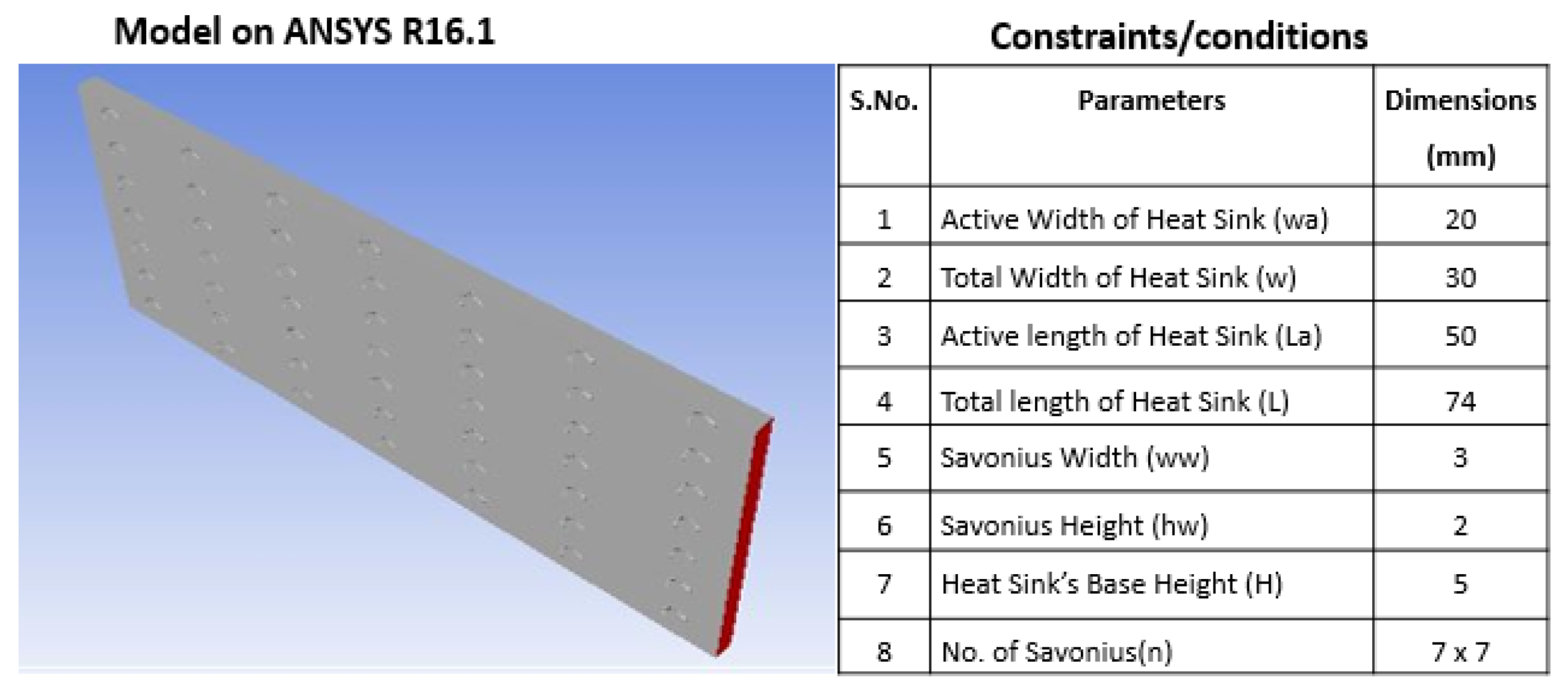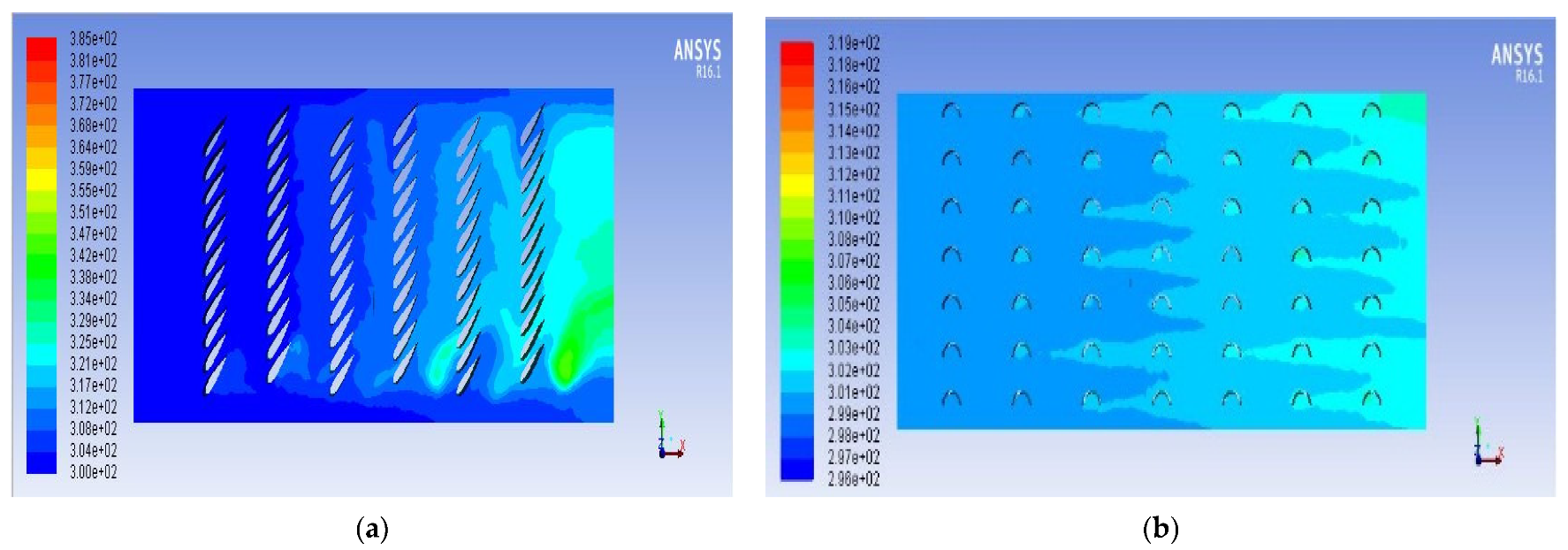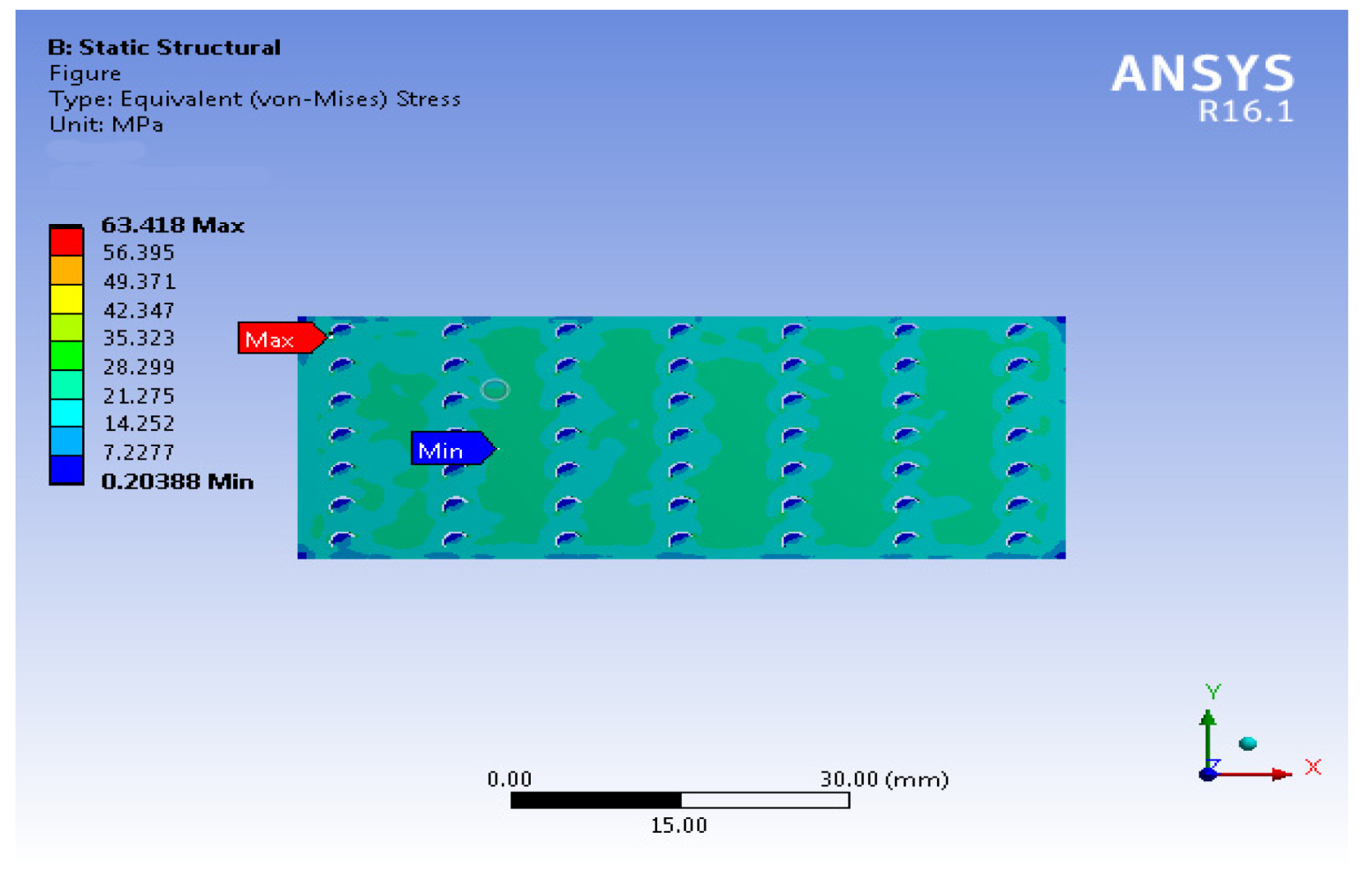Hybrid Nanofluid-Based Thermal Fluid–Structure Interaction (FSI) Investigations for the Thermal Management System of a Computer Microprocessor †
Abstract
:1. Introduction
2. Methodology
3. Results and Discussion
4. Conclusions
Acknowledgments
Conflicts of Interest
References
- Madhesh, D.; Parameshwaran, R.; Kalaiselvam, S. Experimental investigation on convective heat transfer and rheological characteristics of Cu–TiO2 hybrid nanofluids. Exp. Therm. Fluid Sci. 2014, 52, 104–115. [Google Scholar] [CrossRef]
- Kong, L.; Sun, J.; Bao, Y. Preparation, characterization and tribological mechanism of nanofluids. Rsc. Adv. 2017, 7, 12599–12609. [Google Scholar] [CrossRef] [Green Version]
- Sundar, L.S.; Singh, M.K.; Sousa, A.C. Enhanced heat transfer and friction factor of MWCNT–Fe3O4/water hybrid nanofluids. Int. Commun. Heat Mass Transf. 2014, 52, 73–83. [Google Scholar] [CrossRef]
- Saeed, M.; Kim, M.-H. Header design approaches for mini-channel heatsinks using analytical and numerical methods. Appl. Therm. Eng. 2017, 110, 1500–1510. [Google Scholar] [CrossRef]




| Airfoil Heat Sink | Savonius Heat Sink |
|---|---|
| CASE 1: The top and bottom of each airfoil column are kept inline to each other. | CASE 1: Buckets are kept at a 0° angle with the linear axis of the heat sink. |
| CASE 2: The 2nd, 4th, and 6th column of airfoils are not inline to each other; rather, they are moved 2 mm above. | CASE 2: Buckets are kept at a 100° angle with the linear axis of the heat sink. |
| CASE 3: The 2nd, 4th, and 6th column of airfoils are not inline to each other; rather, they are moved 4 mm above for maximum heat extraction. | CASE 3: Buckets are kept at a 300° angle with the linear axis of the heat sink for maximum heat extraction. |
Publisher’s Note: MDPI stays neutral with regard to jurisdictional claims in published maps and institutional affiliations. |
© 2021 by the authors. Licensee MDPI, Basel, Switzerland. This article is an open access article distributed under the terms and conditions of the Creative Commons Attribution (CC BY) license (https://creativecommons.org/licenses/by/4.0/).
Share and Cite
Amjad, W.; Nawaz, A.; Munir, A.; Mahmood, F. Hybrid Nanofluid-Based Thermal Fluid–Structure Interaction (FSI) Investigations for the Thermal Management System of a Computer Microprocessor. Eng. Proc. 2021, 12, 30. https://doi.org/10.3390/engproc2021012030
Amjad W, Nawaz A, Munir A, Mahmood F. Hybrid Nanofluid-Based Thermal Fluid–Structure Interaction (FSI) Investigations for the Thermal Management System of a Computer Microprocessor. Engineering Proceedings. 2021; 12(1):30. https://doi.org/10.3390/engproc2021012030
Chicago/Turabian StyleAmjad, Waseem, Adil Nawaz, Anjum Munir, and Faisal Mahmood. 2021. "Hybrid Nanofluid-Based Thermal Fluid–Structure Interaction (FSI) Investigations for the Thermal Management System of a Computer Microprocessor" Engineering Proceedings 12, no. 1: 30. https://doi.org/10.3390/engproc2021012030
APA StyleAmjad, W., Nawaz, A., Munir, A., & Mahmood, F. (2021). Hybrid Nanofluid-Based Thermal Fluid–Structure Interaction (FSI) Investigations for the Thermal Management System of a Computer Microprocessor. Engineering Proceedings, 12(1), 30. https://doi.org/10.3390/engproc2021012030









